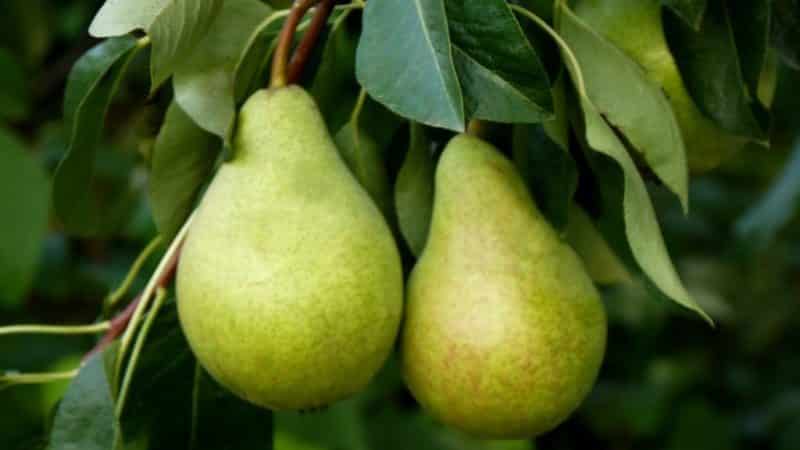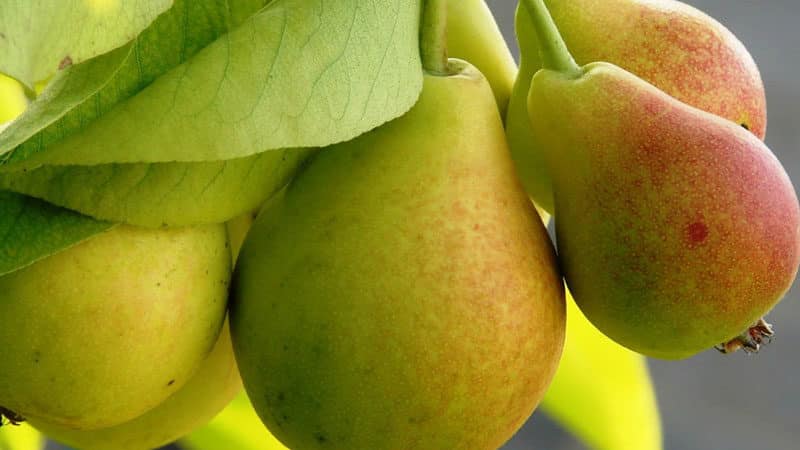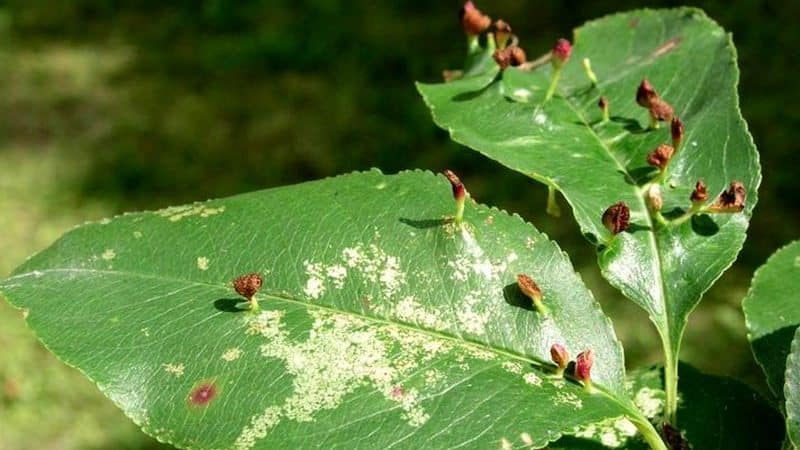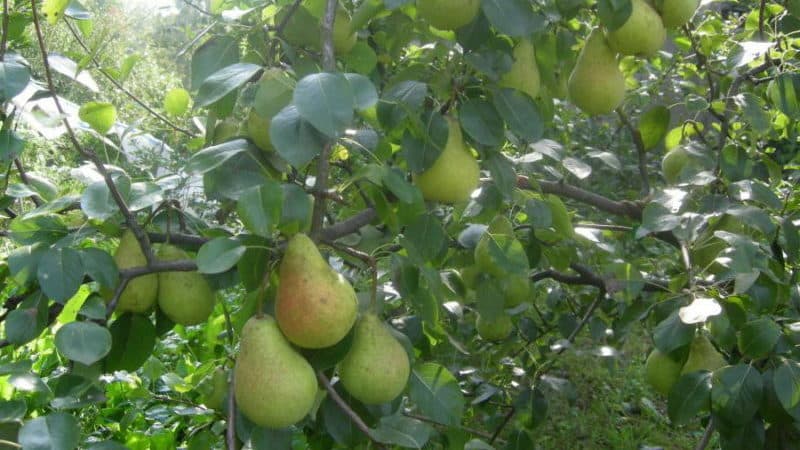Unpretentious high-yielding pear variety "Victoria"
Victoria pear is a late-summer ripening variety with excellent varietal characteristics. The trees bloom profusely, the flowers do not fall off, forming 100% of the ovaries. The culture has enviable frost resistance and is suitable for cultivation in regions with warm climates. Increased resistance to drought allows the tree to grow and develop in risky farming conditions. The juicy, sweet fruits contain virtually no seeds and are suitable for fresh consumption.
Description and history of the appearance of the Victoria pear variety
The Victoria summer pear was bred in 1973 by engineers of the Ukrainian “Institute of Irrigated Horticulture” in Melitopol. Authors: G. I. Kulikov, E. A. Avramenko, P. V. Grozditsky, I. N. Boyko, I. N. Maksimova. The varieties Bere Bosk and Tolstobezhka were used for crossing. The culture has taken root in the gardens of central and southern Ukraine.
The crop was included in the State Register of Breeding Achievements of the Russian Federation in 1993 after variety trials were carried out. The variety has received permission for cultivation in the North Caucasus region and Crimea. It is not grown in the central regions of Russia due to unsuitable climatic conditions.
Characteristics
The table shows the distinctive features of the Victoria pear.
| Index | Characteristic |
| Form | Pyramidal, tree height – 4 m, compact crown |
| Beginning of fruiting | 6-7 years after planting |
| Fruit ripening | Aug. Sept |
| Formation of ovaries | On the rings |
| Bloom | Second ten days of May.Flowering is abundant, the flowers are white, collected in inflorescences, remain on the tree and do not fall off. Ovaries are formed in 100%. |
| peduncle | Long, curved, securely holds the fruit on the tree |
| Fruit shape | Wide, pear-shaped |
| Pulp | White, tender, juicy, without grains or dense areas |
| Skin | Medium thickness, yellow, with a bright blush covering most of the fruit. There are rust spots. Subcutaneous points are noticeable, in large numbers. |
| Weight | 200-250 g |
| Taste | Pleasant, sweet, with a slight sourness, tasting score – 4.5-5 on a five-point scale |
| Sugar, % | 7-8 |
| Acid,% | 0,4 |
| Dry substances, % | 13 |
| Aroma | Thin |
| Purpose | Tableware, ideal for fresh consumption |
| Productivity | Stable, does not decrease from year to year and amounts to 190-200 kg per 1 tree |
| Marketability | 98% |
| Keeping quality | 2-4 months |
| Transportability | High |
| Sustainability | To severe frosts, heat and drought, scab |
Pollinators
The variety is characterized by a high level of fruit set. The plant is capable of self-pollination and parthenocarpic type of fruit formation. This means that there are no seeds in the box. Experienced gardeners recommend planting Victoria next to the pollinating varieties Nikolai Kruger, Red Williams, and Triumph of Vienna to be on the safe side.
Advantages and disadvantages
Advantages of the variety:
- high productivity;
- large fruit;
- excellent taste and aroma;
- frost resistance;
- resistance to heat and drought;
- immunity to scab;
- lack of seeds;
- stable fruiting.
The disadvantage is the deterioration of taste in cold summer conditions with a small number of sunny days.
Interesting! The pear is considered a “female fruit” because of its peculiar curved shape and large amount of vitamin E, which helps preserve beauty and youth for a long time.

Planting seedlings
For normal development, the Victoria pear is provided with comfortable conditions. The culture loves sun and warmth, does not tolerate drafts and excessive humidity. The ideal soil is loose structure, drained, with a neutral (pH=6.5-7) or slightly acidic reaction (pH=5-6).
For planting, choose a place on the south-eastern or southern slope with a slope of no more than 20°. There should be protection in the form of tall, dense trees or buildings on the north or northeast side. Pollinators must be located within a radius of 50 m.
When growing pears in the tolerance area, planting is done in early spring or autumn.
Basic requirements for seedlings:
- state of rest;
- age 1-2 years;
- developed rhizome with fibrous roots without cones and growths;
- the bark is smooth, without cracks and signs of infectious diseases.
Gardeners recommend planting in the spring. By the time of the first frost, the seedlings will have time to take root and gain strength.
Seedlings purchased in the fall are stored in the basement or buried in the ground until spring. The roots are first dipped in a mixture of cow dung and clay.
Step by step guide:
- The planting hole is prepared in advance: 2-3 weeks before spring planting and before the onset of frost for autumn planting.
- The depth of the pit is 60-70 cm, diameter is 80-100 cm.
- 10-15 cm of expanded clay, crushed stone or broken brick are placed at the bottom.
- A nutrient mixture is prepared from equal parts of peat, black soil, sand and compost. Add 0.3 kg of superphosphate and 3-5 liters of ash to it.
- The nutrient mixture is poured into the hole and waited for shrinkage.
- The roots of the seedling are immersed in clean water or a solution of a growth stimulator (Epin, Kornevin) for 2-4 hours before planting.
- A meter-long wooden stake or metal rod is driven in 10-15 cm from the center of the pit.
- A portion of the soil is raked out of the hole to create a depression in which the roots are freely distributed.
- When planting, make sure that the root collar is at ground level.
- The hole is completely filled with soil mixture and the seedling is tied to the support with a rope or soft tape. The barrel is not crushed in this case.
- The hole is watered generously so that the roots fit tightly to the soil. Then the surface is loosened and covered with a 10-15 cm layer of mulch made from sawdust, peat or straw.
- Perform formative pruning - remove the central conductor at a height of 60-80 cm and branches at a distance of 20-30 cm from the trunk.
After planting seedlings of the Victoria variety, you have to wait 6-7 years before fruiting begins. Grafting with quince rootstock allows you to speed up this process.
Subtleties of care
Agricultural technology for Victoria pears involves moderate watering, pruning branches, mulching the trunk circle and applying fertilizing.
Watering
The plant tolerates drought in southern climates. It is successfully grown even in the risky farming zone - the steppes with minimal rainfall in summer. However, this does not mean that you can forget about watering. The best option is a drip irrigation system and sprinkling. Mulching the tree trunk helps retain moisture in the soil and protect the tree from frost.
The bases of skeletal branches and trunks are whitened with slaked lime with the addition of copper sulfate twice a year - in spring and autumn.
Top dressing
For the first 3-4 years after planting, no fertilizer is applied - the young tree has enough nutrients from the pit. Next, the plant is fed with organic matter and minerals.
The table shows the optimal feeding schedule.
| Fertilizer | Quantity | Application period |
| "Superagro", superphosphate, double superphosphate | 30-40 g per 1 m² | In autumn when digging the soil |
| Ammonium nitrate, "Nitroammofoska", urea | 30-40 g per 1 m² | In the beginning of March |
| Monophosphate and potassium sulfate
|
10-20 g per 1 m² | At the beginning of June |
| Mullein solution | Add 2 liters of mullein to 10 liters of water; after a week, the concentrate is diluted with water 1:10. Consumption – 10 l per 1 m² of circle. | During the period of ovary appearance and fruit ripening, 3 times every 2-3 weeks |
| Humus, compost, peat
|
10 l per 2 m² of trunk circle | In spring or autumn once every 3 years |
Trimming
For Victoria pears, the following types of pruning are used:
- sanitary;
- supportive;
- formative.
Formative pruning is performed to give the tree a neat shape, making it easier to care for and harvest.
The first type of branch molding is sparse-tiered:
- 3-4 years after planting, in the spring, the first tier of skeletal branches is formed. To do this, select 2-3 shoots and remove a length of 25-40 cm. The remaining branches are cut into a ring.
- The central conductor is shortened by 20-30 cm.
- Next year, a second tier is created in the same sequence.
- After 1-2 years, the third tier is formed.
- The final stage is trimming the central conductor above the base of the apex.
The second type of molding is cup-shaped:
- Select 3-4 branches located at a distance of 15-20 cm and cut the length to 25-40 cm. The remaining branches are removed completely.
- The second stage is the complete removal of the central conductor above the base of the apex.
- After 1-2 years, 1-2 branches of the second order are selected on the skeletal branches, the rest are removed.
- Next, they monitor the uniform development of the branches and do not allow any of them to become the central conductor.
- Every year, part of the shoots growing inside the crown is cut off to prevent thickening of the tree.
Maintenance pruning is performed in the summer.This is necessary to maintain a high level of fruiting. Young shoots are cut by 5-10 cm with pruning shears. After 2 weeks, buds awaken on them, from which new branches develop - spears and ringlets. Fruit buds form on them, producing a harvest the following season.
Sanitary pruning involves removing dry, diseased and damaged branches. It is performed as needed.
This is interesting:
Review of the Osennyaya Yakovleva pear variety: advantages, disadvantages.
Wintering
When planting in autumn, the tree trunk circle is mulched with peat, compost, sawdust or straw to protect the rhizomes from severe frosts.
Thin branches are tied together with the trunk with a rope so that gusty winds do not damage them. The tree is covered with an awning or thick polyethylene.
Disease and pest control

The Victoria variety is immune to scab and is characterized by high resistance to moniliosis and powdery mildew. The table shows diseases that occur when agricultural practices are violated.
| Disease | Symptoms | Treatment | Prevention measures |
| White spot or septoria | In early spring, gray spots appear on the foliage, increasing in diameter by mid-summer. Then they become brownish-brown in color. The leaves dry out and fall off. | In the spring - “Chorus”, in the summer - “Strobe” and “Skor”. | Cleaning and burning of fallen leaves, treatment with 3% copper sulfate, Bordeaux mixture in spring and autumn. |
| Rust | Green-yellow spots on leaves during flowering. In July they turn bright orange. On the back of the leaves, growths appear in the form of papillae with fungal spores inside. | Infected foliage is removed, the crown is sprayed with Skor, Abiga-Pik, and Strobi. | Removal of plant residues from the site, preventive treatment with copper sulfate in early spring. |
| Sooty fungus | The carriers of spores are aphids and copperheads. A gray coating appears on the leaves and fruits. Then it turns black, giving the impression that the fruits are stained with soot. | Removing plaque with water under high pressure, treatment with “Skor” and “Strobe”.
|
Preventing the spread of insects. |
The table below provides information about the main insect pests that attack pear trees.
| Pest | Signs | Fighting methods | Prevention |
| Medyanitsa | The 3 mm long insect can fly and jump. It feeds on plant juices from flowers, leaves and buds. The fruits become stony, small and tasteless. | Before flowering - “Commander”, after - “Fitoverm”, “Iskra-Bio”.
The crown and foliage are washed with water from a hose. |
Removing weeds and fallen leaves. Treating the crown in the spring with the herbicide Nitrafen. |
| Aphid | The leaves curl into tubes, and hordes of green, yellow and black aphids are visible inside. | Removing leaves, washing the crown with water from a hose.
Treatment with insecticides “Decis”, “Iskra”, “Fitoverm”. |
Installation of catching belts, whitewashing with lime and 1% copper sulfate. |
| Pear sawfly | The butterfly overwinters in the soil and begins laying eggs on the foliage in June. Caterpillars gnaw tunnels in the fruits, which leads to their spoilage. | Treatment with insecticides “Decis”, “Fufanon”. | Autumn plowing of the soil, installation of catch belts, whitewashing with lime. |
Harvest and storage

The first harvest is harvested on the 20th of August, the last - at the end of September. Pears are picked together with the stalk, being careful not to damage the skin.
The harvest is placed in wooden boxes and stored in the cellar. Optimum air temperature – +1…+4°С, humidity – 90-95%.Pears collected at the stage of technical ripeness last 1-2 months. In a cool cellar they can be preserved for 2 months longer.
The bottom of the container is lined with straw, the fruits are stacked in one layer. The containers are placed one on top of the other, ensuring air circulation.
Conclusion
Heat-loving and frost-resistant The Victoria pear has been pleasing gardeners for several decades in a row with abundant white blossoms and juicy, oily fruits. The crop is resistant to scab, bears fruit consistently from year to year, and produces a high yield. The fruits with medium-thick skin have a sweet taste with a slight sourness.
When trees are damaged by fungi, they are treated with fungicides, copper sulfate and Bordeaux mixture. To prevent the spread of insects, plant debris is removed from the site, and the trees are whitened with lime.